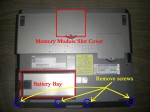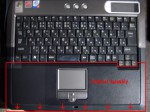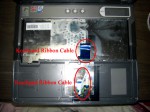phpMyAdmin 4.1.0 is released. They say “With this release the minimum supported PHP version is now 5.3 and the minimum MySQL version is 5.5”. It has a ton of information in the ChangeLog. So I updated.
I downloaded a phpMyAdmin-4.1.0-english.zip, extracted it, copied my old config.inc.php to the phpmyadmin folder made by extracting, and uploaded all of them to the server (See “To create a Wamp-like Web Server in Windows7-#3.“).
By the way, when I compared the new config.sample.inc.php with my old one, I found some additional lines in it. Like this:
At /* User used to manipulate with storage */ area
// $cfg[‘Servers’][$i][‘controlport’] = ”;
At /* Storage database and tables */ area
// $cfg[‘Servers’][$i][‘users’] = ‘pma__users’;
// $cfg[‘Servers’][$i][‘usergroups’] = ‘pma__usergroups’;
// $cfg[‘Servers’][$i][‘navigationhiding’] = ‘pma__navigationhiding’;
At the last area above the doc/ folder information
/**
* Should error reporting be enabled for JavaScript errors
*
* default = ‘ask’
*/
//$cfg[‘SendErrorReports’] = ‘ask’;
So, when I logged on the new phphmyadmin at the first time, I got “The phpMyAdmin configuration storage is not completely configured, some extended features have been deactivated. To find out why click here.”.
By a clicking, I got the next three alerts.
$cfg[‘Servers’][$i][‘users’] … not OK [ Documentation ]
$cfg[‘Servers’][$i][‘usergroups’] … not OK [ Documentation ]
Configurable menus: Disabled
$cfg[‘Servers’][$i][‘navigationhiding’] … not OK [ Documentation ]
Hide/show navigation items: Disabled
I had instructions, too.
Quick steps to setup advanced features:
Create the needed tables with the examples/create_tables.sql.
Create a pma user and give access to these tables.
Enable advanced features in configuration file (config.inc.php), for example by starting from
config.sample.inc.php.
Re-login to phpMyAdmin to load the updated configuration file.
To create the tables with the examples/create_tables.sql or by your hand, it is your choice. Further information about this, see “Configuration storage“. As I already had the pma user, I created the tables manually. Then, I added new additional lines above to my config.inc.php, and removed “//” from the head of the next lines.
$cfg[‘Servers’][$i][‘users’] = ‘pma__users’;
$cfg[‘Servers’][$i][‘usergroups’] = ‘pma__usergroups’;
$cfg[‘Servers’][$i][‘navigationhiding’] = ‘pma__navigationhiding’;
I re-logined to phpMyAdmin to load the updated configuration file. Mission complete.



